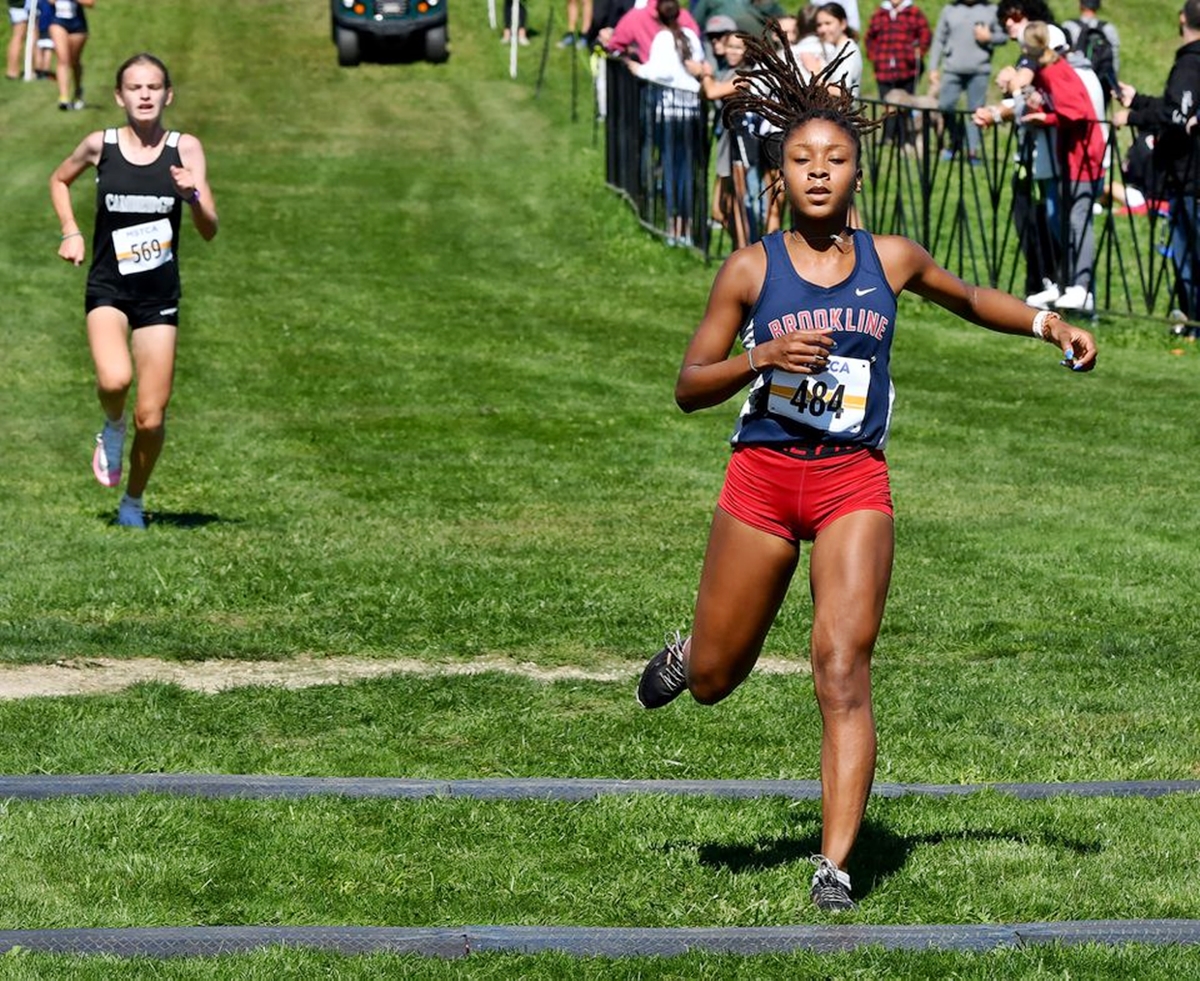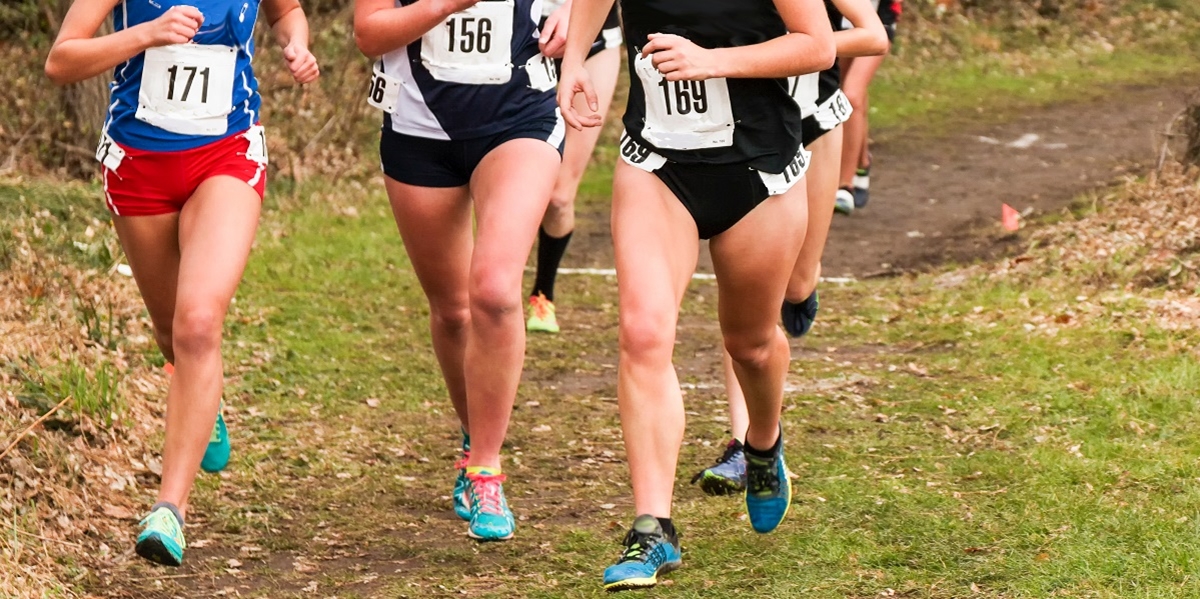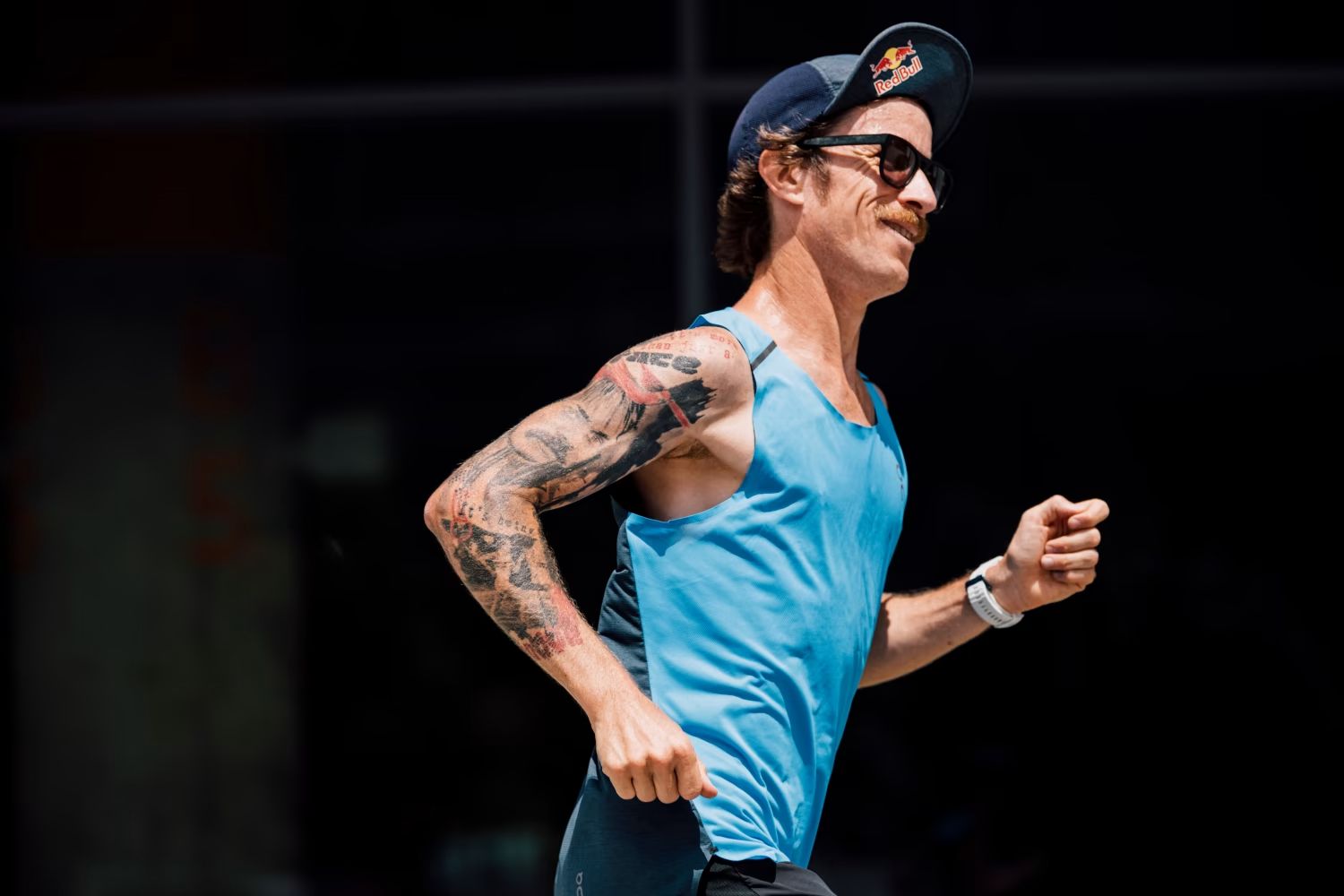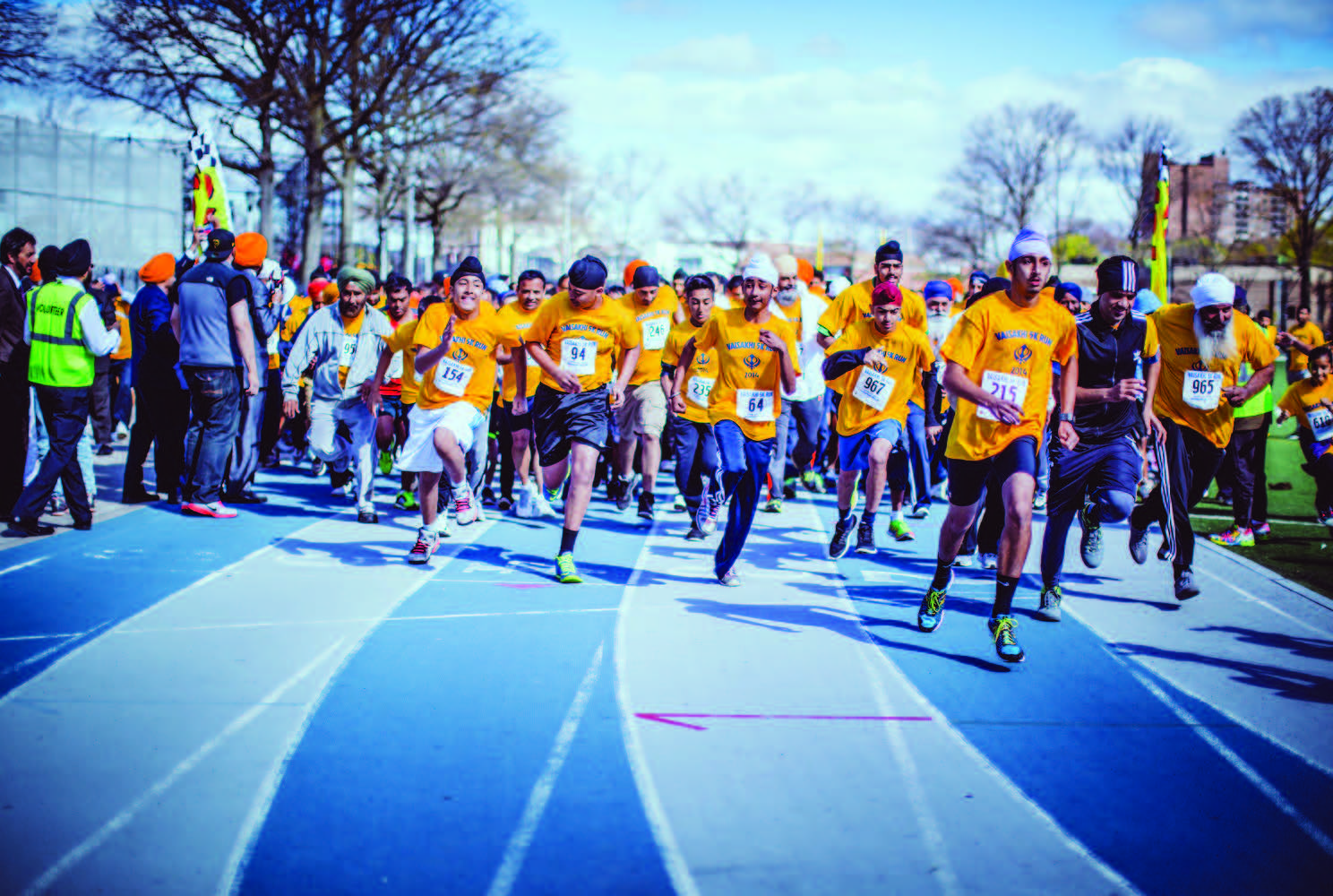

Featured
What Is A Good 5K Cross Country Time
Modified: August 21, 2023
Discover what is considered a good 5K cross country time, and get featured tips to improve your performance.
Introduction
Welcome to the exciting world of cross country running! If you’re new to this sport, you might be wondering what a good 5K cross country time is. Whether you’re an aspiring competitive runner or simply looking to improve your fitness, understanding what constitutes a good time can provide a helpful benchmark for your goals.
Cross country running is a challenging and invigorating sport that combines endurance, strategy, and mental toughness. Unlike traditional track racing, cross country takes place on different terrains, including grass, dirt trails, and even uneven surfaces. Runners navigate through various obstacles and natural features, such as hills, mud, and tree roots, making it a thrilling and unpredictable experience.
Over the years, cross country has gained popularity due to its accessibility and inclusive nature. It’s a sport that welcomes athletes of all ages and abilities, from high school students competing at the state level to recreational runners participating in community races. The camaraderie amongst participants and the chance to appreciate the beauty of nature are additional attractions that draw people to the sport.
When it comes to assessing the performance in cross country, the 5K distance is recognized as the standard race length. A 5K race covers approximately 3.1 miles, demanding a balance between speed and endurance. It’s a true test of a runner’s ability to maintain a steady pace throughout varying terrain and challenging course conditions.
Several factors can influence 5K cross country times. Fitness level, course difficulty, weather conditions, training regimen, and mental mindset all play a role in determining how fast a runner can complete a race. Understanding these factors can help athletes set realistic goals and track their progress.
In this article, we will explore what constitutes a good 5K cross country time. We will take into account various factors that influence performance and provide insights on training strategies to improve your times. Whether you’re a seasoned competitor or just starting your cross country journey, this guide will give you a better understanding of what it takes to excel in this exhilarating sport.
What is Cross Country
Cross country is a form of long-distance running that takes place on various terrains, such as grass, trails, and even rough, uneven surfaces. Unlike track running, which is held on a measured oval track, cross country courses are typically set in natural landscapes, making each race challenging and unique.
The origins of cross country can be traced back to the 19th century in England, where it was initially devised as a means of training for track athletes during the winter months. It rapidly gained popularity and eventually became an official sport in its own right.
One of the defining characteristics of cross country is the emphasis on teamwork and strategy. Teams from schools and clubs compete against each other, with the top finishers contributing to the overall team score. This encourages athletes to not only focus on their individual performance but also work together to secure victory for their team.
In a cross country race, runners often face a variety of challenges. They have to navigate through obstacles like hills, mud, water, and uneven terrain, which demand agility, balance, and quick thinking. The diversity of the course makes cross country races more mentally and physically demanding compared to track events.
Addtionally, runners must also contend with unpredictable weather conditions. Races can take place in scorching heat, freezing cold, heavy rain, or even snow. These external factors further test a runner’s resilience and ability to adapt to different circumstances.
One unique aspect of cross country that sets it apart from other forms of running is the opportunity to appreciate the beauty of nature. The courses often wind through parks, forests, and picturesque landscapes, providing runners with breathtaking views along the way. This aspect of cross country adds to its appeal as a sport that connects athletes with the great outdoors.
Overall, cross country combines physical endurance, mental fortitude, and strategic thinking. It’s a sport that requires athletes to be well-rounded and adaptable. Whether you’re running for personal fitness or as part of a team, cross country offers a thrilling and rewarding experience that pushes you to your limits and fosters a sense of camaraderie among fellow competitors.
The Popularity of 5K Cross Country
5K cross country races have seen a surge in popularity in recent years, attracting participants from all walks of life. The appeal of 5K cross country lies in its accessibility, inclusivity, and the unique challenges it presents.
One of the main reasons for the popularity of 5K cross country is its versatility as a distance. The 5K distance, equivalent to 3.1 miles, strikes a balance between speed and endurance, making it manageable for both seasoned athletes and beginners. This makes it an attractive option for individuals looking to challenge themselves and push their limits.
In addition, 5K cross country races are often held in scenic locations, such as parks or nature reserves, offering participants the chance to enjoy beautiful surroundings while engaging in physical activity. The immersive experience of running through trails and natural landscapes adds an element of adventure and excitement to the race.
Furthermore, 5K cross country races foster a sense of camaraderie among participants. Whether you’re running as part of a team or as an individual, the supportive and encouraging atmosphere creates a sense of community. The shared challenges and triumphs experienced during the race help build connections and create lasting memories.
Another factor contributing to the popularity of 5K cross country is its inclusivity. People of all ages and fitness levels can participate, making it a family-friendly activity. Many races offer different categories or divisions to accommodate participants based on their age or ability, ensuring that everyone can join in on the fun.
The rise of community and charity-driven events has also contributed to the appeal of 5K cross country races. Many races are organized to support various causes and charitable organizations, allowing participants to combine their love for running with making a positive impact in their communities. This aspect adds an extra layer of purpose and motivation for individuals to lace up their running shoes and take part in these events.
Furthermore, the rise of social media and the growing focus on health and fitness have helped promote the popularity of 5K cross country races. People are increasingly looking for ways to stay active, challenge themselves, and share their accomplishments with others. Participating in a 5K cross country race provides individuals with an opportunity to document their journey, connect with like-minded individuals, and celebrate their achievements.
Overall, the rising popularity of 5K cross country races can be attributed to their versatility, inclusive nature, and the sense of community they create. Whether you’re a seasoned runner or a beginner, participating in a 5K cross country race offers a rewarding and fulfilling experience that combines physical activity with a sense of accomplishment.
Factors Affecting 5K Cross Country Times
When it comes to 5K cross country races, several factors can significantly impact a runner’s performance and overall time. Understanding these factors is essential for setting realistic goals and improving race outcomes. Here are some key factors that influence 5K cross country times:
- Terrain: The type of terrain on which the race takes place can have a significant impact on performance. Courses with challenging elements such as hills, mud, or uneven surfaces can slow down runners and require additional effort to maintain speed and momentum.
- Weather Conditions: Weather plays a crucial role in cross country races. Hot and humid conditions can lead to dehydration and fatigue, while cold and wet conditions can affect traction and make the course more challenging to navigate. Windy conditions can also impact a runner’s pace and effort.
- Fitness Level: A runner’s overall fitness level, including cardiovascular endurance, muscular strength, and endurance, plays a significant role in their performance. Training with a focus on building endurance, speed, and strength can contribute to improved 5K cross country times.
- Efficient Running Technique: Having proper running form and technique can make a difference in performance. Techniques such as maintaining an upright posture, utilizing arm swing, efficient stride length, and foot placement can help optimize speed and energy efficiency.
- Mental Mindset: The mental aspect of racing is crucial. Developing mental toughness, focus, and positive self-talk can help runners push through fatigue and challenges during the race. A strong mental mindset can lead to improved performance and faster times.
- Training Program: Following a well-structured training program that includes a balance of endurance runs, intervals, tempo runs, and strength training can greatly improve 5K cross country times. Consistency and gradually increasing training volume and intensity are key factors in performance improvement.
- Nutrition and Hydration: Proper nutrition and hydration before, during, and after the race are essential for optimal performance. Fueling the body with the right nutrients and staying hydrated can improve endurance, prevent fatigue, and aid in post-race recovery.
- Race Strategy: Having a solid race strategy can help runners pace themselves effectively and strategically manage their energy throughout the course. Knowing when to push the pace, when to conserve energy, and when to make strategic moves can contribute to improved race times.
It’s important to note that each runner may be affected differently by these factors. Personal strengths, weaknesses, and individual characteristics can influence how each factor impacts performance. Some runners may excel in challenging terrain, while others may struggle. Understanding one’s own abilities and working to optimize performance in specific areas can lead to improvements in 5K cross country times.
The Average 5K Cross Country Time
The average 5K cross country time can vary depending on several factors, including age, gender, fitness level, and the competitiveness of the race. It’s important to keep in mind that cross country races attract a wide range of participants, from recreational runners to elite athletes. The average times can serve as a general guideline, but they should not be taken as a fixed standard.
For male high school cross country runners, the average 5K time is typically around 19-21 minutes. This takes into account a competitive level of fitness and training. However, it’s important to note that times can vary significantly depending on the skill level of the athlete and the level of competition in their region or state.
Female high school runners tend to have slightly slower average times, often ranging from 22-25 minutes for a 5K cross country race. Again, these averages are based on a competitive level of fitness and training. However, it’s essential to recognize that there are many exceptional female runners who achieve times that rival or surpass those of their male counterparts.
For adult recreational runners, the average 5K time can range from 25-30 minutes. This includes a mix of beginner and experienced runners who participate in races for fitness and personal enjoyment. It’s important to remember that the emphasis for recreational runners is often on completing the race rather than achieving a specific time.
When looking at elite cross country runners, the average 5K time is typically significantly faster. Male elite runners can complete a 5K cross country race in under 16 minutes, while female elite runners can finish in under 19 minutes. These times reflect the exceptional level of fitness, dedication, and training required to compete at the highest level in cross country.
Overall, it’s essential to consider individual goals, circumstances, and personal improvement when evaluating 5K cross country times. While average times can provide a benchmark for comparison, they should not discourage or limit runners from setting their own goals and striving for continuous improvement.
What Constitutes a Good 5K Cross Country Time
Defining what constitutes a good 5K cross country time can be subjective and dependent on various factors. The perception of a good time can vary based on individual goals, fitness levels, and the level of competition in a particular race. However, certain benchmarks can provide a helpful perspective for evaluating performance.
For high school cross country runners, a good 5K time is often considered to be under 18 minutes for males and under 21 minutes for females. These times reflect a competitive level of fitness and training, with exceptional runners achieving even faster times.
At the collegiate level, where competition is heightened, a good 5K time for males can range from under 16 minutes to around 19 minutes, depending on the division and conference. For females, good times can range from under 18 minutes to around 21 minutes. These benchmarks are highly dependent on the level of competition and the overall talent pool in collegiate cross country.
For adult recreational runners, a good 5K time is often a personal achievement rather than a specific benchmark. It can differ greatly based on an individual’s starting point, goals, and level of commitment to training. Aiming for consistent improvement and personal bests is a common measure of success in this category.
In terms of elite cross country athletes, a good 5K time is typically considered to be under 14 minutes for males and under 17 minutes for females. These times reflect the upper echelon of the sport, where exceptional fitness, talent, and years of dedicated training are required to reach such levels of performance.
It’s important to note that what makes a time good is subjective and dependent on each individual’s circumstances. Factors such as age, experience, and personal improvement play a significant role in evaluating performance. What may be considered a good 5K cross country time for one person could be a stepping stone for another.
Ultimately, the goal should be to set personal targets, strive for continuous improvement, and find fulfillment in the journey of running. Whether it’s shaving off a few seconds, achieving a new personal best, or simply finding joy in the sport, what constitutes a good 5K cross country time is a deeply personal and individualized measure of success.
Training Strategies to Improve 5K Cross Country Time
Improving your 5K cross country time requires a well-rounded training program that combines endurance, speed, strength, and mental preparation. Here are some effective strategies to help you maximize your training and achieve better results:
- Establish a Consistent Training Routine: Consistency is key in cross country training. Set a regular training schedule that includes a mix of distance runs, intervals, tempo runs, and rest days to allow for recovery and prevent overtraining.
- Build Endurance: Increasing your aerobic capacity is crucial for long-distance running. Gradually increase your weekly mileage and incorporate long runs to build endurance. Aim to complete regular runs at a conversational or comfortable pace to develop a solid aerobic base.
- Incorporate Speed Work: Intervals and tempo runs help improve speed and lactate threshold, allowing you to sustain a faster pace during the race. Include workouts such as repeats, fartleks, and tempo runs to challenge your body and enhance your ability to maintain a faster pace over time.
- Focus on Strength Training: Incorporate strength training exercises into your routine to improve overall muscle strength, stability, and injury prevention. Target lower body exercises such as squats, lunges, and calf raises, as well as core exercises to help maintain proper running form and increase power.
- Practice Hill Work: Cross country courses often include challenging hills. Incorporate hill repetitions into your training to improve leg strength and prepare your body for uphill running. Focus on both uphill and downhill running to develop the necessary techniques for tackling varied terrain.
- Develop Mental Resilience: Cross country races require mental toughness. Incorporate mental training techniques such as visualization, positive self-talk, and mindfulness to stay focused and push through discomfort during the race.
- Pay Attention to Nutrition and Hydration: Fueling your body properly is essential for optimal performance. Maintain a balanced diet that includes carbohydrates for energy, protein for muscle repair, and healthy fats for overall health. Stay hydrated before, during, and after training sessions and races to prevent dehydration and fatigue.
- Include Rest and Recovery: Rest and recovery are just as important as training. Allow your body time to recover and adapt to the training stimulus. Incorporate rest days, active recovery activities, and adequate sleep to prevent overtraining and reduce the risk of injury.
Remember, every runner is unique, so it’s essential to listen to your body and adjust your training accordingly. Gradually progress in mileage, intensity, and volume to avoid injury and allow for continual improvement. Working with a coach or joining a running group can provide guidance, support, and accountability throughout your training journey.
With consistent training, mental focus, and a well-rounded approach, you can make significant strides in improving your 5K cross country time and achieve your personal best.
Conclusion
5K cross country running is a challenging and exhilarating sport that combines endurance, strategy, and mental toughness. Understanding what constitutes a good 5K cross country time is important for setting goals and tracking progress. However, it’s essential to remember that what is considered a good time may vary based on individual factors such as age, gender, fitness level, and competition level.
Cross country running offers a unique experience, allowing athletes to navigate through various terrains and appreciate the beauty of nature. It promotes camaraderie among participants and provides an opportunity to challenge oneself both physically and mentally.
Factors such as terrain, weather conditions, fitness level, running technique, mental mindset, training program, nutrition, and race strategy can all impact 5K cross country times. By understanding these factors and implementing effective training strategies, runners can work towards improving their performance.
A good 5K cross country time can be seen as a personal achievement and is dependent on individual goals and circumstances. From high school competitors aiming for fast times to recreational runners looking to challenge themselves, each person’s definition of a good time may differ.
Ultimately, success in 5K cross country running lies in setting personal targets, striving for continuous improvement, and finding joy in the journey. Whether you’re aiming for a podium finish or simply aiming to beat your personal best, the sport of cross country running offers the opportunity to push your limits, connect with a supportive community, and achieve feats you never thought possible.
So lace up your running shoes, hit the trails, and embrace the adventure and excitement of 5K cross country running. With dedication, perseverance, and a love for the sport, you can unlock your true potential and reach new heights in this thrilling discipline.






